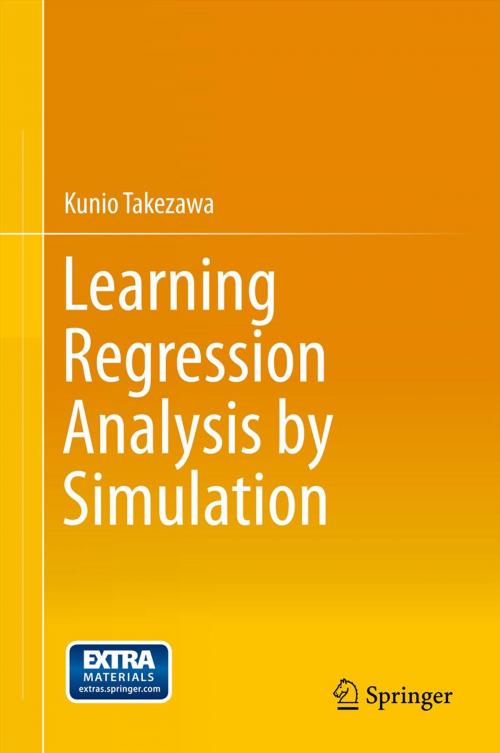Learning Regression Analysis by Simulation
Nonfiction, Science & Nature, Mathematics, Statistics, Computers, Application Software| Author: | Kunio Takezawa | ISBN: | 9784431543213 |
| Publisher: | Springer Japan | Publication: | October 8, 2013 |
| Imprint: | Springer | Language: | English |
| Author: | Kunio Takezawa |
| ISBN: | 9784431543213 |
| Publisher: | Springer Japan |
| Publication: | October 8, 2013 |
| Imprint: | Springer |
| Language: | English |
The standard approach of most introductory books for practical statistics is that readers first learn the minimum mathematical basics of statistics and rudimentary concepts of statistical methodology. They then are given examples of analyses of data obtained from natural and social phenomena so that they can grasp practical definitions of statistical methods. Finally they go on to acquaint themselves with statistical software for the PC and analyze similar data to expand and deepen their understanding of statistical methods.
This book, however, takes a slightly different approach, using simulation data instead of actual data to illustrate the functions of statistical methods. Also, R programs listed in the book help readers realize clearly how these methods work to bring intrinsic values of data to the surface. R is free software enabling users to handle vectors, matrices, data frames, and so on.
For example, when a statistical theory indicates that an event happens with a 5 % probability, readers can confirm the fact using R programs that this event actually occurs with roughly that probability, by handling data generated by pseudo-random numbers. Simulation gives readers populations with known backgrounds and the nature of the population can be adjusted easily. This feature of the simulation data helps provide a clear picture of statistical methods painlessly.
Most readers of introductory books of statistics for practical purposes do not like complex mathematical formulae, but they do not mind using a PC to produce various numbers and graphs by handling a huge variety of numbers. If they know the characteristics of these numbers beforehand, they treat them with ease. Struggling with actual data should come later. Conventional books on this topic frighten readers by presenting unidentified data to them indiscriminately. This book provides a new path to statistical concepts and practical skills in a readily accessible manner.
The standard approach of most introductory books for practical statistics is that readers first learn the minimum mathematical basics of statistics and rudimentary concepts of statistical methodology. They then are given examples of analyses of data obtained from natural and social phenomena so that they can grasp practical definitions of statistical methods. Finally they go on to acquaint themselves with statistical software for the PC and analyze similar data to expand and deepen their understanding of statistical methods.
This book, however, takes a slightly different approach, using simulation data instead of actual data to illustrate the functions of statistical methods. Also, R programs listed in the book help readers realize clearly how these methods work to bring intrinsic values of data to the surface. R is free software enabling users to handle vectors, matrices, data frames, and so on.
For example, when a statistical theory indicates that an event happens with a 5 % probability, readers can confirm the fact using R programs that this event actually occurs with roughly that probability, by handling data generated by pseudo-random numbers. Simulation gives readers populations with known backgrounds and the nature of the population can be adjusted easily. This feature of the simulation data helps provide a clear picture of statistical methods painlessly.
Most readers of introductory books of statistics for practical purposes do not like complex mathematical formulae, but they do not mind using a PC to produce various numbers and graphs by handling a huge variety of numbers. If they know the characteristics of these numbers beforehand, they treat them with ease. Struggling with actual data should come later. Conventional books on this topic frighten readers by presenting unidentified data to them indiscriminately. This book provides a new path to statistical concepts and practical skills in a readily accessible manner.















